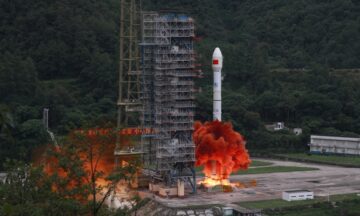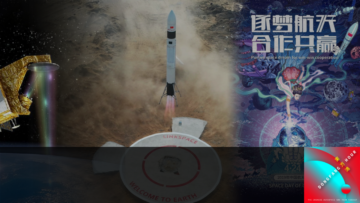
This article is a short summary for the end-of-year podcast my friend Blaine Curcio and I have recorded earlier this week, summing up the highlights of Chinese space in 2019. The podcast is freely available in the audio links below.
Part 1: Launch, Constellations, Investment (58 minutes)
Part 2: Space Exploration, and the “Pot Pourri Section” (39 minutes)
For listeners accessing the webpage from China, the classical audio players may be more straightforward:
Long March 5 to the Launchpad & Chinese Commercial Launch Vehicles Gaining Momentum
On the heavy side of space launch, the decisive event of the year is the return to the launchpad of Long March 5, the king of the Chinese Long March rocket family, of which many very significant Chinese space program missions will depend upon. The launch is planned for the 27th of December in Wenchang, Hainan: some space-related excitement between Christmas and New Year’s Eve can be expected.
On a more commercial side of things, after 5 years of announcements, planning, and intense R&D, the Chinese private launch sector has finally reached an important milestone: the successful launch of the first private rocket into orbit. The glory of this moment belongs to iSpace and its Hyperbola-1, although its (numerous) compatriots are also gaining momentum, among which are Landspace, One Space, Linkspace, and Jiuzhou Yunjian. Yet the competition with the large state-owned spin-offs, Expace and China Rocket, raises the question the viability of having so many domestic competitors competing for a market that is yet to materialize: the one of massive Chinese LEO constellations.
More Questions than Answers regarding Constellations
Although the number of constellations projects in China are quite significant, on par for example with Europe, the pace at which most are advancing seem to be reduced to a crawl, from a space observer’s perspective. While initial announcements of massive investment and deployment have been made, these have yet to be seen, most constellations operators have at most sent up a test satellite into orbit. This could be for regulatory reasons (private vs. state-owned, domestic vs. international), and perhaps also doubts regarding the actual market for these constellations, especially for space comms. Meanwhile, SpaceX has announced a launch every two weeks for the deployment of its StarLink constellation, and OneWeb has similarly announced monthly launches for 2020.
Investment
2019 was also an important year for investment, as round after round, record amounts of capital has poured into Chinese space startups. As the maturity of many space startups grow, we have naturally observed an increase in the amounts raised. It was also interesting to watch new types of investors in Chinese space, including large real estate companies.
Conclusion
For a much more in-depth discussion, please check out the podcast! A format which is, I believe, much more suited for longer discussions rather than a 10,000-word blog post. Also, feel free to connect with Blaine Curcio (#ChinaSpaceGuy on LinkedIn) and myself. Happy holidays!
- &
- 2019
- 2020
- 39
- 9
- among
- announced
- Announcements
- article
- audio
- Blog
- capital
- China
- chinese
- Christmas
- commercial
- Companies
- competition
- competitors
- estate
- Europe
- Event
- events
- exploration
- family
- Finally
- First
- format
- Free
- Grow
- HTTPS
- Including
- Increase
- International
- investment
- Investors
- IT
- King
- large
- launch
- launches
- Long
- March
- Market
- Momentum
- perspective
- planning
- podcast
- private
- Program
- projects
- R&D
- raises
- real estate
- reasons
- satellite
- Short
- So
- Space
- space exploration
- SpaceX
- Startups
- successful
- test
- Vehicles
- Watch
- week
- WordPress
- year
- years


